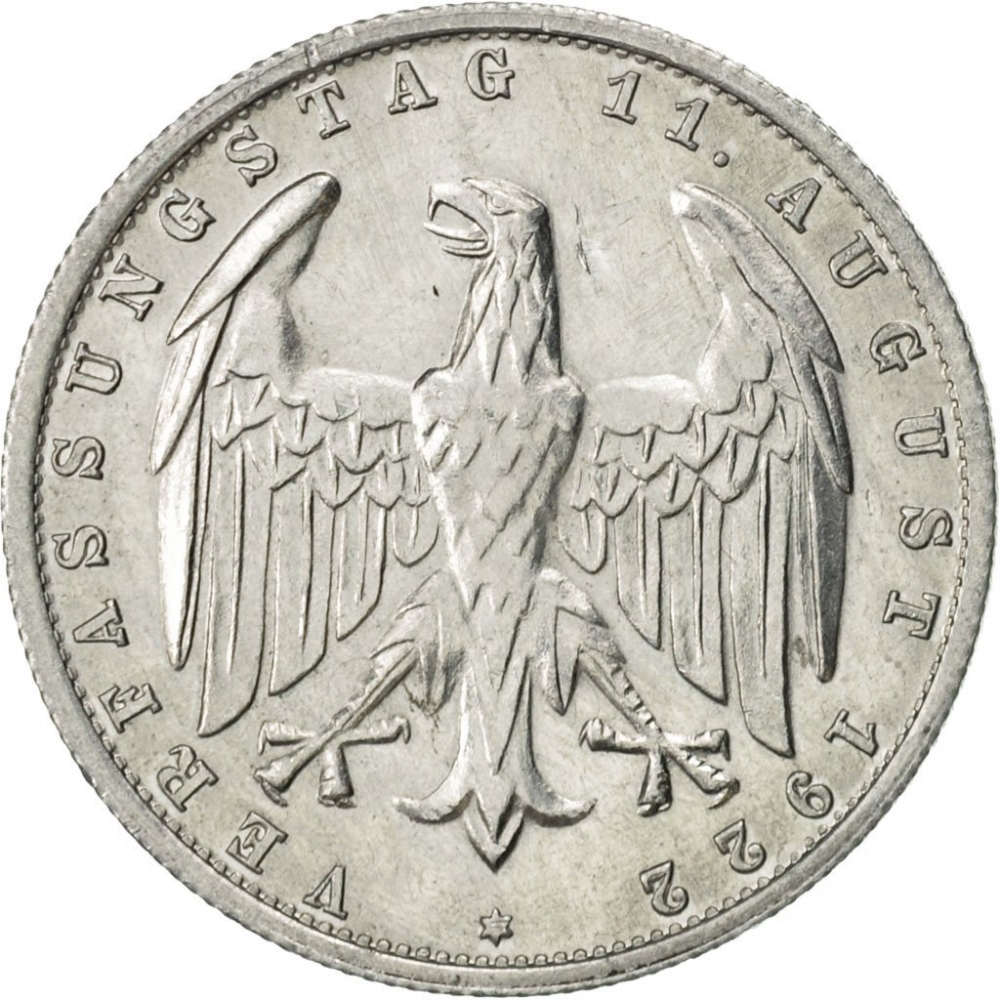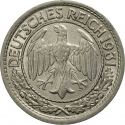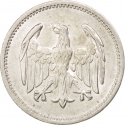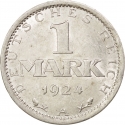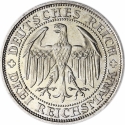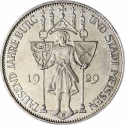You are about to finish your registration. Please check your mailbox (including spam folder). There should be a letter with a confirmation link. Check setting to make sure that your e-mail address is correct.
Send letter againDescription
Weimar Republic is an unofficial, historical designation for the German state between 1919 and 1933. The name derives from the city of Weimar, where its constitutional assembly first took place. The official name of the state was still Deutsches Reich. In its fourteen years, the Weimar Republic faced numerous problems, including hyperinflation, political extremism (with paramilitaries – both left- and right-wing); and contentious relationships with the victors of the First World War.
The Constitution of the German Reich, usually known as the Weimar Constitution was the constitution that governed Germany during the Weimar Republic era (1919–1933). The constitution declared Germany to be a democratic parliamentary republic with a legislature elected under proportional representation. Universal suffrage was established, with a minimum voting age of 20. The constitution technically remained in effect throughout the Nazi era from 1933 to 1945.
Minted in 1922, the ‘Constitution Coin’ was also an opportunity to present the public with a new symbol of German statehood – a Reichsadler (Imperial Eagle) for the modern age. With more than 50 million examples in circulation, the coins passed into the hands of the entire population. However, German currency lost so much value during the period of hyperinflation that most of the commemorative coins re-issued in 1923 were never released.
Engravers: Josef Wackerle, Reinhard Kullrich
Obverse

|
Depicts the coat of arms of the German Reich (1919–28), Imperial Eagle (Reichsadler) facing left, surrounded by the inscription "Constitution Day 11th of August" and date. VERFASSUNGSTAG 11. AUGUST 1922 * |
|---|---|
Reverse

|
Value in centre with date below, lettering around outside, mint mark between acorns at bottom. DEUTSCHES REICH |
| Edge |
3 Mark
Weimar Constitution Day
KM# 29 Schön# 26 Jaeger# 303
Weimar Constitution Day
